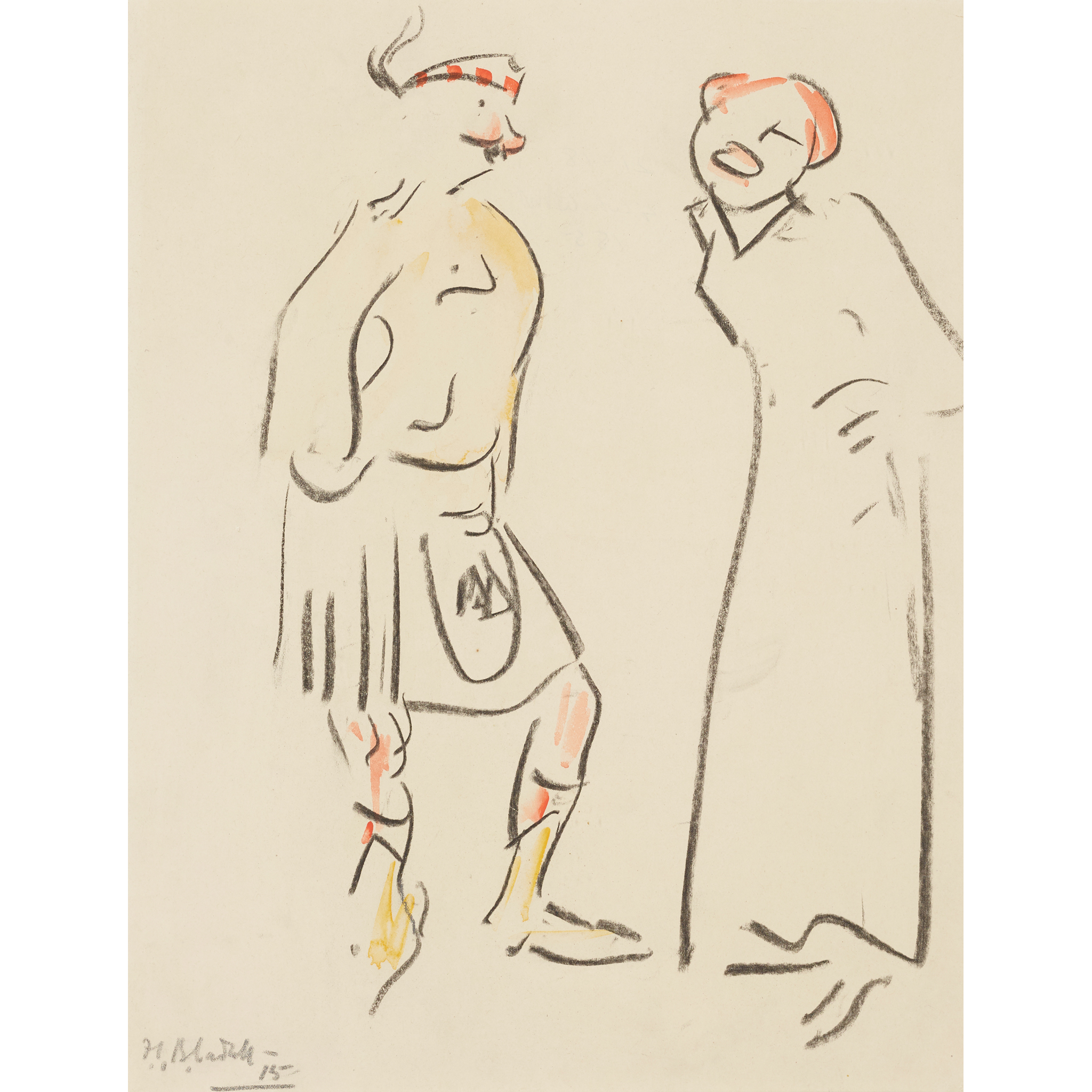FRANCIS CAMPBELL BOILEAU CADELL, R.S.A., R.S.W. (SCOTTISH 1883-1937)
JACK AND TOMMY: KILTED SOLDIER AND LADY
£10,080
Scottish Paintings & Sculpture
Auction: Evening Sale: Lots 100 to 191 | 06 June 2024 at 6pm
Description
Signed with initials and dated '15, charcoal and watercolour
Dimensions
33cm x 26cm (13in x 10.25in)
Provenance
By direct descent from the Artist to the present owner
Footnote
The Health Inspection, A Couple in Conversation and Kilted Soldier and Lady come from Cadell’s celebrated Jack and Tommy series of works on paper of 1915, in which he captured aspects of life in the army and navy during his military training.
Cadell joined the 9th Battalion, The Royal Scots in 1915 and was commissioned as a 2nd Lieutenant in the 5th Battalion of the Argyll and Sutherland Highlanders two years later. The only one of the four Scottish Colourists to see active service during World War One, he was posted to the French front, was wounded twice and was awarded the General Service and Victory medals.
As Alice Strang has explained about the Jack and Tommy series:
“About fifty were shown in the Society of Eight’s exhibition of 1916, whilst twenty were published by Grant Richards, London, in 1916 in a book entitled Jack and Tommy. These witty, quickly executed images, depicting solders and sailors on duty and on leave, had titles such as ‘Delicate Banter’, ‘Their Lordships’ and ‘Tommy and the Flapper’. The brisk, economic brush-and-ink technique of these drawings seems to have been based on illustrations Kees van Dongen made in the early 1900s, for journals such as L’assiette au beurre and Gil-Blas. Of the £100 Cadell made in sales from the exhibition, he donated almost half to the Scottish Branch of the Red Cross.” (Alice Strang, F. C. B. Cadell, National Galleries of Scotland, Edinburgh, 2011, p.35)
When reviewing the 1916 exhibition, the critic of The Studio declared:
“The novelty of the Society of Eight Exhibition in their galleries in Shandwick Place, was a series of clever cartoons of soldiers and sailors…These bold sketches, in which, with a minimum of line in black, with sometimes a dash of colour introduced, a marvellous completeness of effect is produced.’ (The Studio, vol.LXVII, 1916, p.59)
Further works from the Jack and Tommy series are to be found in the collection of the National Galleries of Scotland.
Our thanks are due to Kerry Watson, National Galleries of Scotland, for her help with our research.

